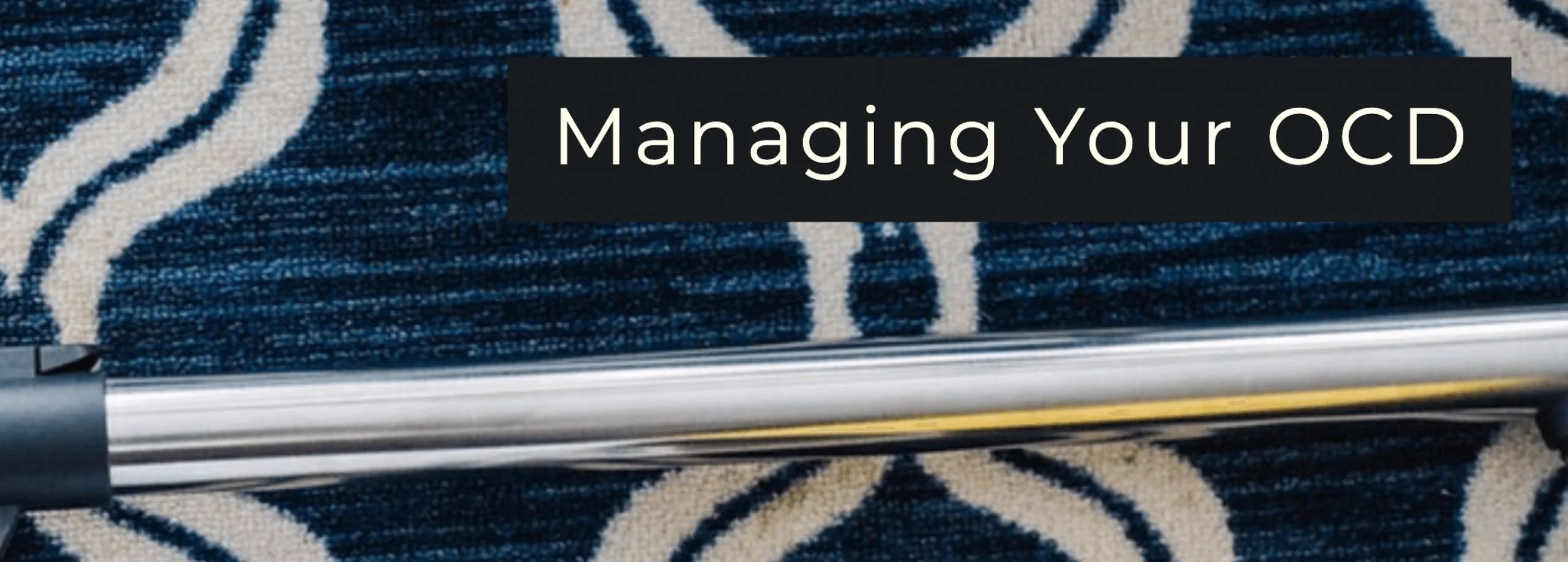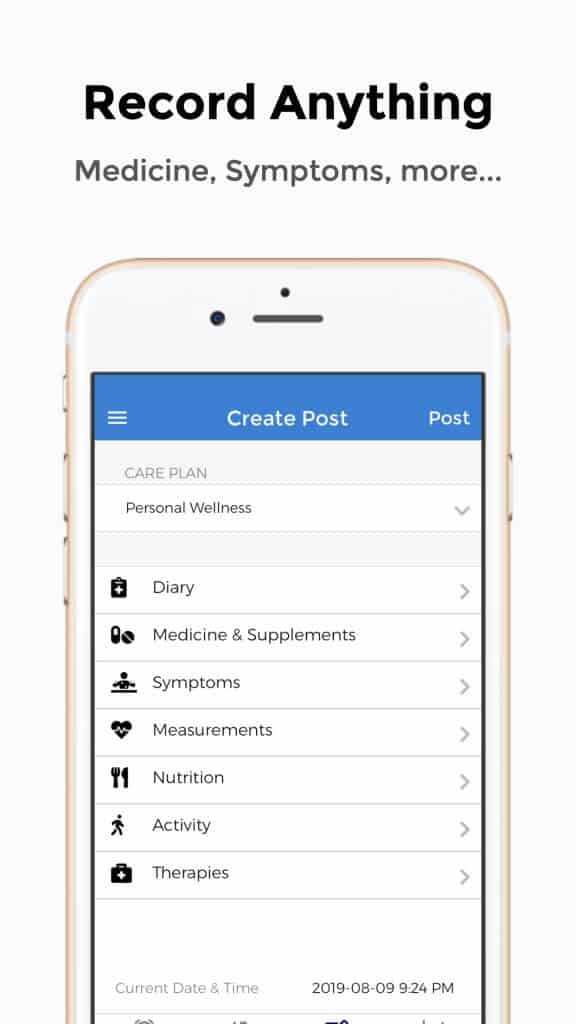
Obsessive-compulsive disorder, often abbreviated as OCD, is a mental health disorder, in which the person in question deals with obsessive thoughts and feels the permanent need to go through specific routines. He/she will be unable to control himself/herself, with these activities affecting the daily living in a negative manner. The CareClinic app enables individuals to design care plans and helps them stick to set routines to deal with OCD in a more systematic way.
According to the World Health Organization, OCD occupies the 10th place in the list of conditions that lead to disability. It has been estimated that between one and three percent of the general population in the United States suffers from this health issue. Obsessive-compulsive disorder is also encountered in the pediatric population, affecting 1 in 200 children.
People who suffer from OCD often engage in the excess washing of the hands, or they repeatedly check if the light is turned off. They might also feel the compulsive need to count things or become chronic hoarders. Anxiety can be present as a co-existent condition. The majority of those who suffer from OCD are well aware that their behavior is not normal, this being of the primary reasons why they present a high risk of suicide.
How does OCD manifest itself?
In case you are wondering what OCD does do to a person, try to imagine a person who exhibits abnormal behavior, as a result of obsessive thoughts and compulsions.
One can present obsessive thoughts, which often cause distress to the person in question. These are not wanted thoughts and they lead to urges, appearing repeatedly. They might be related to keeping things clean or in order, to counting or to maintaining symmetry. One might also experience forbidden thoughts, either of a sexual, violent or religious nature.
The compulsions appear on the basis of the obsessive, intrusive thoughts, causing significant anxiety. In turn, this will cause the person to engage in repetitive behaviors. By giving into the compulsion, one will experience temporary relief but the thoughts will soon come back, leading to a new vicious cycle.
People who suffer from OCD might develop an obsession for cleaning, fearing possible contamination and the associated illness. Some of them have difficulties throwing things out, becoming chronic hoarders. The obsessive thoughts can also be based on various fears, such as the one of harming others or even oneself. (R)
What are the causes of OCD?
Despite the extensive research made in the field, researchers have yet to find the answer to this question:
How Does OCD Develop?
It is believed that OCD appears as a result of a combination of factors, including genetic, environmental and neurobiological. Research has demonstrated that OCD can be a learned behavior or appear in association with pregnancy or other major life events, capable of triggering this disorder. It has been suggested that the chemical imbalance in the brain might be behind OCD as well.
Streptococcal infections might be responsible for the development of OCD in children, studies have shown. The condition can also be inherited, with the risk of developing OCD increasing considerably in the situation one has family members who suffer from this disorder. Life experiences can cause one to develop a negative thought pattern, which in turn will lead to the obsessive-compulsive disorder.
What causes OCD to get worse?
Well, both stress and depression rank at the top of the list. The stress associated with a major life event can cause the condition to become worse. The same goes for co-existent mental health issues, such as depression and anxiety. In children, the parenting style and peer pressure can worsen the manifestations of OCD. (R)
How is OCD diagnosed?
How do you know if you suffer from OCD? If you suspect this disorder to be present, you can present to a psychiatrist or psychologist for an evaluation. You will be given a quiz to answer, which might be useful in identifying existent compulsions and obsessive thoughts. A thorough discussion might also be useful for the identification of behavioral patterns.
In making the diagnosis of OCD, the specialist will refer to the diagnostic criteria for this condition (DSM-5 – American Psychiatric Association). He/she will discuss with friends and family, as they can offer useful information with regard to your behavior. A physical examination might reveal symptoms related to co-existent conditions and lab tests might be used to rule out conditions such as thyroid disorders. The doctor might run a complete blood count as screening for alcohol and drugs. (R)
Management of OCD – Dealing with it
If you are wondering how to deal with OCD, you should know that there are plenty of opportunities to consider. Aside from specific OCD treatments, you can consider self-care measures, as well as seek out support and education.
Therapy
Cognitive behavioral therapy is often used for the management of OCD, often in combination with medication (psychotropic drugs). The therapy is meant to expose the person who suffers from this disorder to situations that could trigger obsessive thoughts and/or compulsions. The person will be taught not to give into the compulsion, becoming gradually accustomed to the resulting anxiety (increasing toleration). Therapy might also help in case of associated anxiety/depression.
A number of drugs can be prescribed to those who suffer from the obsessive-compulsive disorder. Tricyclic antidepressants, as well as selective serotonin reuptake inhibitors are recommended. The first, however, tend to cause side effects that are more severe. It is critical to remember to take your pills on time every time.
The administration of drugs in children must be carefully monitored, due to the high risk of adverse reactions. In such cases, it is for the best to stick to the short term treatment and combine the medication with cognitive behavioral therapy. Additional measures of treatment include electroconvulsive therapy, deep brain stimulation and the stimulation of the vagus nerve. However, these are usually reserved for the most severe cases.
Family support
In children who have been diagnosed with OCD, the support offered by the family is essential. Parents must observe the behavior of their child, offering a positive reinforcement in the situation that the correct response is noticed (with regard to obsessive thoughts or compulsions). Learn more about the care team functionality in CareClinic by clicking here.
The parents should take part of the cognitive behavioral therapy sessions, as this guarantees a higher chance of improvement. Thanks to CBT, the child will also acquire coping strategies, which will be useful for future situations in which he/she might experience compulsions or become bothered by obsessive thoughts. (R)
Additional Self-care Measures to Deal with OCD
If you have been diagnosed with obsessive-compulsive disorder, the first step you need to take is educating yourself on the subject. You have to acknowledge the fact that your anxiety stems from a combination of obsessive thoughts and compulsions that need to be fulfilled.
Learn about OCD and the fact that everyone experiences thoughts that are unpleasant or unwanted. Also, just because you have an intrusive thought, that keeps re-appearing, this does not mean you will also act on it. You are not a bad person just because you are going through this.
Keep in mind that the interpretation you give to these thoughts matters more than you might think. As for giving into compulsions, this will only offer temporary relief from the anxiety experienced and, on the long run, it will make matters worse. Strategies such as reassurance, avoidance or checking are traps, as they reinforce the vicious cycle. In fact, they have the opposite effect of what you hoped.
The key to escaping OCD is to break this vicious cycle. You will have to work hard and eliminate all of the above-mentioned strategies, one by one. The hardest part will come after, as you will have to change your entire thought pattern, especially with regard to your obsessions.
You should begin your battle against OCD by facing your fears and exposing yourself to situations that could trigger obsessions and/or compulsions (as CBT will also teach you). You must also resist engaging in coping strategies that are not helpful, such as avoidance, compulsion or reassurance. (R)
Use the CareClinic App to Deal with OCD

Within the application, you keep track of these triggers on a daily basis and enter them in the built-in journal. Keep in mind that obsessive thoughts and compulsions can appear with increased frequency, so you should educate yourself to record at least three triggers per day. This will give you a clear image of your current status, without having to feel pressured to return to the application more often.
For each of the situations in which you experienced a compulsion, you can rate your level of fear and/or anxiety. You can use zero to express that no fear or anxiety was present, and ten for the maximum response. You might also want to record any strategies you used to obtain relief from the fear/anxiety. This should include not only your behavior but also to mental strategies you will use.
As the application is available on both iOS and Android smartphones, you will always benefit from easy and immediate access. In general, it is recommended to use the CareClinic health diary immediately after an episode has occurred. In this way, you will be quite precise and remember all of the facts along be able to determine any correlations.
Upon reviewing the entries from the application, you can organize a list of events encountered, ranking them from least scary to the one that evokes maximum fear. The next step will require that you gradually expose yourself, again, to the events on that list (if possible). Start at the bottom and proceed until you reach the ones you fear the most.
You should do your best to resist the urge of giving in to the compulsion or adopting coping strategies. Day by day, you need to challenge your thoughts and refrain from coming up with unhealthy interpretations.
Stress management is essential for someone who suffers from OCD. Once again, you can rely on CareClinic’s health app to record the various management solutions that offer stress relief. You might also benefit from organizing a list with potentially stressful situations, as this can help you be more prepared for when the actual situation occurs (anticipation of potential stressors).
It is also essential not to stop and pursue recovery each and every day. Practice these self-care measures and trust the CareClinic health app to keep a careful eye on your progress. With the help of this application, you can review your past experiences and even write down how you are feeling in the present. The built-in journal can help you express both intrusive thoughts and associated emotions so that you realize that things are going in the right direction.
To keep track of your behavior, get started on CareClinic for free by clicking here.



